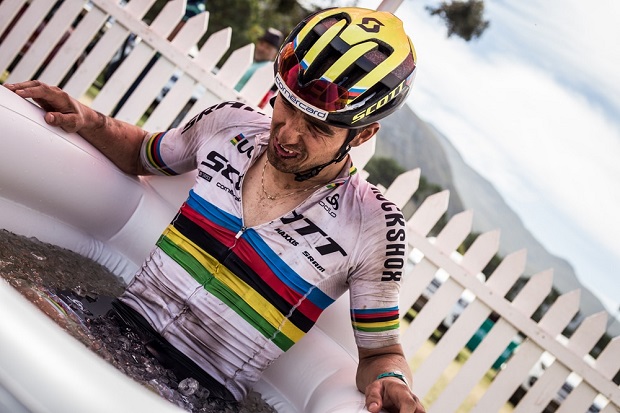Whether training or stage racing, recovery is the name of the game. Many tools and tricks have been used to maximize recovery, including the chilly prospect of cryotherapy or cold-water immersion.
Cryotherapy is done in a cold chamber, wherein athletes immerse themselves, leaving just their head out. Temperatures in the chamber are severely dropped using frozen nitrogen gas.
The latest large scale study involving “whole-body cryotherapy” found that it was effective in relieving something called the “symptomatology” of the various sets of inflammatory conditions that regularly impact athletes. This ranged from reducing oxidative stress (such as lactic acid), hormone production, bone metabolism and skeletal health.
When you are at a whole-body cryotherapy place getting ready to step into the chamber, you first need to make sure you’re completely dry because any moisture could damage your skin in such extreme temperatures. Then you will get gloves and a headband, which will be your only clothing along with your underwear. Some places have a transition chamber that might be around -60 °C where you go for about 30 seconds. After that you will step into the main chamber that should be between -110 to -140 °C and spend about 2-3 minutes in there.
Short-term exposure to extreme cold is supposed to trigger changes in inflammatory response, hormone levels, and pain perception. The question is whether these changes are substantial enough to improve recovery for endurance athletes, and also whether you can get a similar benefit without an expensive high-tech chamber.
Research shows that cryotherapy can reduce blood levels of the stress hormone cortisol. A study with elite rowers training twice per day found that cortisol levels increased after 3 days in the control group, but the cryotherapy group had their increase delayed to day 6. So, when it comes to stress hormones, multiple days of training and multiple treatments are necessary.
Another benefit that is especially interesting to athletes is reduction in inflammation. Doing a lot of exercise can produce a lot of inflammation and slow down recovery, so having a way to reduce inflammation when there’s too much of it is something all cycling teams would appreciate. Recent studies have shown that athletes undergoing whole-body cryotherapy have a reduced production of pro-inflammatory cytokine. These results are only observed when they do multiple sessions.
Research has shown that whole-body cryotherapy is effective for recovery. There’s only one issue. Most research studies conclude that cold water immersion and ice packs are pretty much as effective as cryotherapy when it comes to promoting recovery. So, when we consider that cryotherapy needs to be done frequently and regularly and the price for the necessary 20-30 visits could be hundreds of dollars, it loses its appeal quickly.














